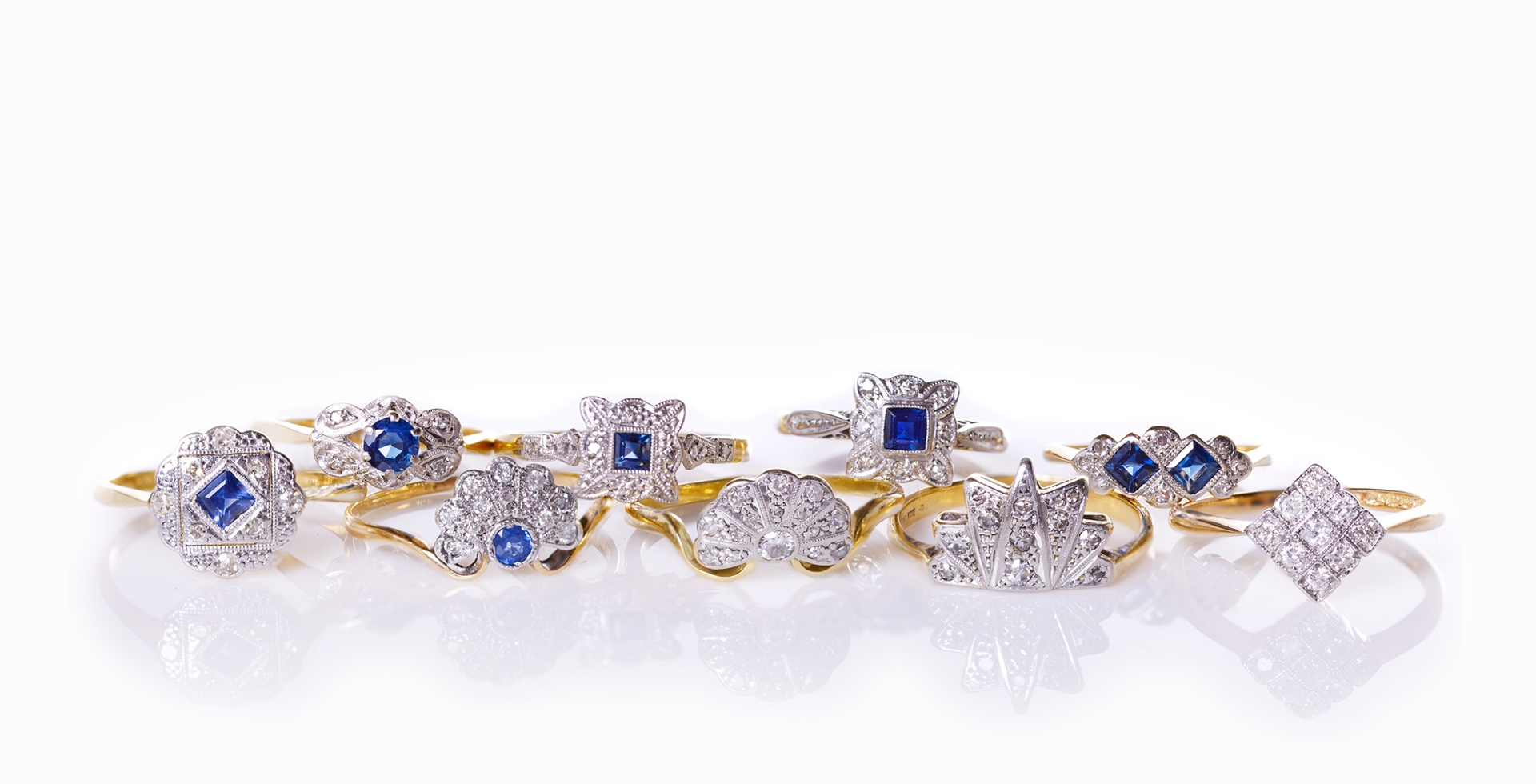Introduction: Antique jewelry, with its intricate designs and rich history, holds a timeless allure that transcends generations. Each piece tells a story of craftsmanship, culture, and the lives of those who once wore it. From ornate Victorian brooches to dazzling Art Deco rings, antique jewelry embodies the epitome of elegance and sophistication. Let’s delve into the fascinating world of antique jewelry and explore its enduring charm.

Exploring the Eras: Antique jewelry spans various eras, each characterized by distinct styles and influences. The Georgian era (1714-1837) is renowned for its elaborate designs featuring intricate metalwork and gemstones such as diamonds, emeralds, and rubies. These pieces often exude a sense of grandeur and opulence, reflecting the lavish tastes of the aristocracy.
Moving into the Victorian era (1837-1901), jewelry design became more sentimental and symbolic. Queen Victoria’s love for her husband, Prince Albert, popularized mourning jewelry adorned with black enamel and gemstones like jet and onyx. Additionally, the discovery of new gemstone sources, such as diamonds in South Africa, led to a proliferation of dazzling gemstone jewelry.
The Art Nouveau movement (late 19th to early 20th century) brought a departure from traditional styles, embracing flowing lines, natural motifs, and an emphasis on craftsmanship. Artists drew inspiration from nature, incorporating elements like flowers, insects, and animals into their designs. Art Nouveau jewelry is celebrated for its organic forms and exquisite detailing.
The Art Deco period (1920s-1930s) marked a shift towards geometric shapes, bold colors, and streamlined aesthetics. Influenced by the modernist movement and the glamour of the Jazz Age, Art Deco jewelry features symmetrical patterns, vibrant gemstones, and innovative materials such as platinum and lacquer. It epitomizes the exuberance and sophistication of the Roaring Twenties.
Appreciating Craftsmanship: One of the most captivating aspects of antique jewelry is the exceptional craftsmanship that went into its creation. Before the advent of modern technology, artisans meticulously crafted each piece by hand, employing techniques such as filigree, repoussé, and enameling. These techniques required immense skill and precision, resulting in jewelry of unparalleled beauty and quality.
Furthermore Antique jewellery, antique jewelry often showcases intricate metalwork, including delicate scrollwork, intricate settings, and elaborate engraving. Artisans spared no effort in ensuring that every detail was meticulously executed, creating heirloom pieces that have stood the test of time.
Collecting and Preserving: Antique jewelry holds immense value not only as wearable art but also as historical artifacts. Collectors and enthusiasts are drawn to its rarity, craftsmanship, and historical significance. Whether passed down through generations or acquired through auctions and estate sales, each piece carries a unique story waiting to be discovered.
Preserving antique jewelry requires careful attention to ensure its longevity. Proper storage, periodic cleaning, and avoiding exposure to harsh chemicals or extreme temperatures are essential for maintaining its beauty and integrity. Additionally, consulting reputable jewelers and appraisers can help authenticate and evaluate antique pieces, providing valuable insights into their provenance and value.
Conclusion: Antique jewelry embodies the enduring beauty of bygone eras, serving as a tangible link to the past. From the intricate designs of the Georgian era to the geometric elegance of Art Deco, each piece reflects the cultural, artistic, and technological advancements of its time. As custodians of these treasures, we have the privilege of preserving their legacy for future generations to cherish and admire.